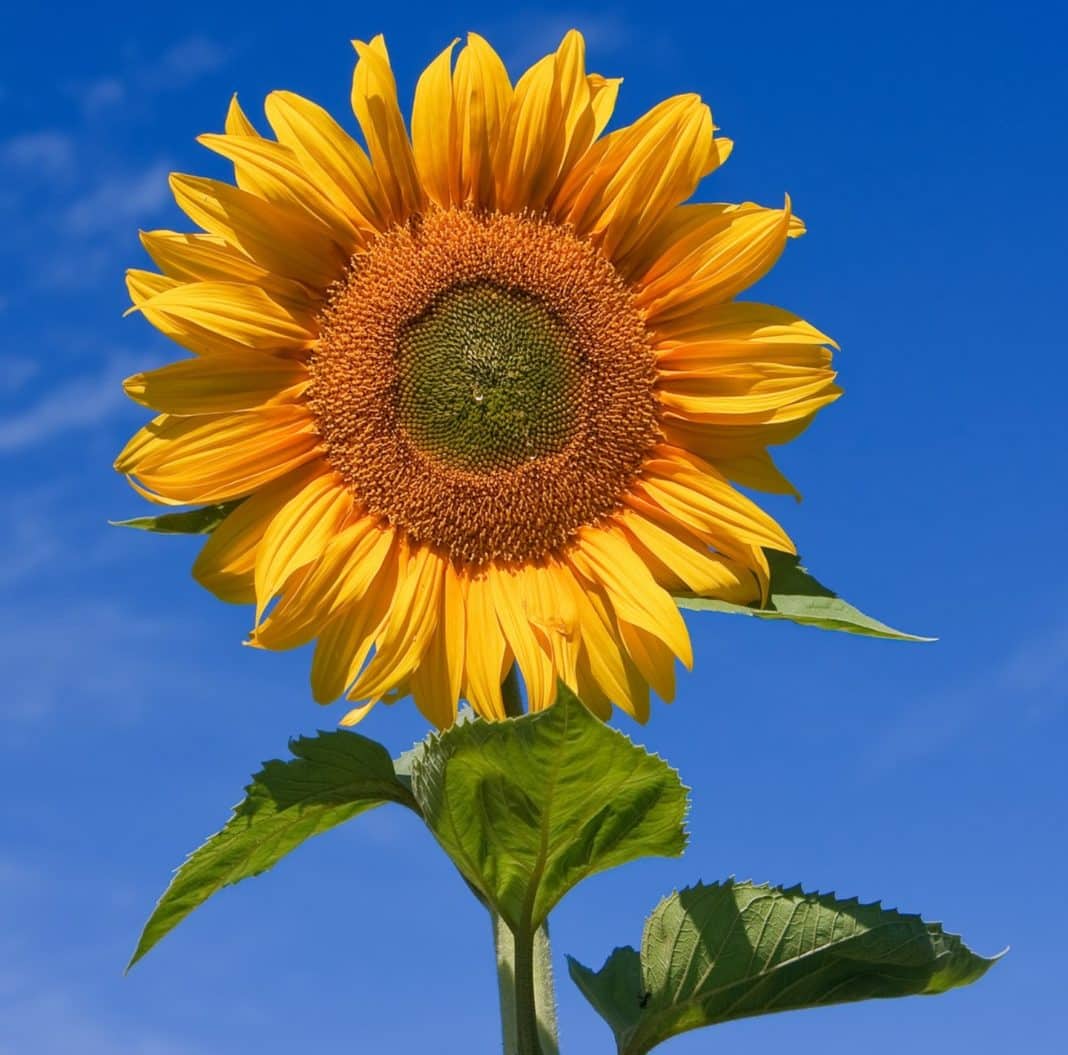Sunflowers are heliotropic, which means that they turn their flower heads to follow the movement of the sun across the sky, east to west, then returns at night to face the east, ready again for the morning sun!
The sunflower is one of the best-loved flowers, that also makes an excellent cut flower.
Most sunflower varieties have yellow flowers, but they can also grow in rusty red, green, golden and white.
Sow sunflower seeds every couple of weeks, to give a constant supply of sunflowers throughout summer.
The largest sunflower varieties grow to over 16 feet in height, with smaller varieties that have been developed for small spaces and containers, rarely growing taller than a foot.
The flower heads can reach over a foot in diameter, within the large-seeded varieties.
Sow the seeds in pots, from April to May, and plant out from June in a sunny, sheltered spot in good soil. Add plenty of well-rotted manure or garden compost, before planting.
Protect the young plants from slugs and snails and water your sunflowers regularly. Feed weekly, to encourage growth. Stake them if they’re in an exposed position.
Don’t allow plants to dry out, as very tall varieties will have a job to recover. After flowering, sunflower heads develop masses of sunflower seeds. Leave the faded flower head intact, so the birds can feast on seeds.
Once the birds have had their fill, take any remaining seeds and leave them to dry for a few days, before storing in a dry spot. Sow the following year.





